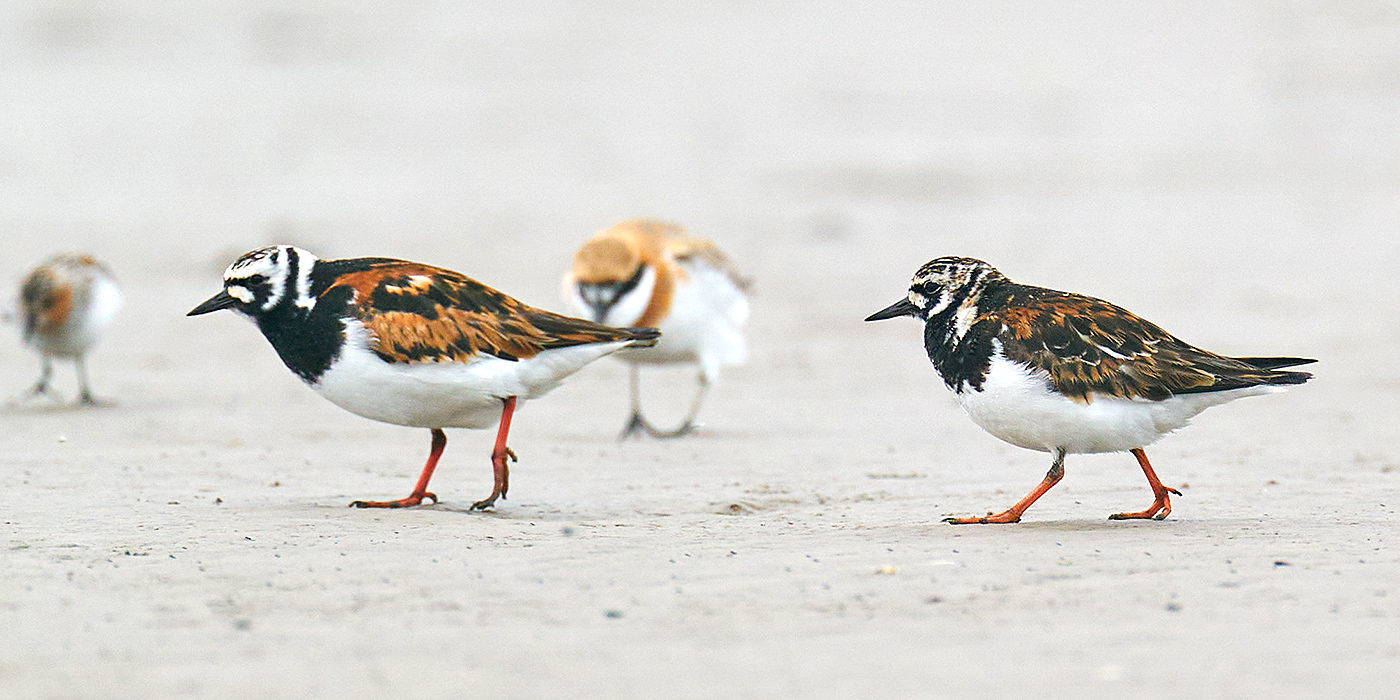
Ruddy Turnstone Arenaria interpres has circumpolar breeding range. In China, nominate is passage migrant along coast, rarely inland wetlands; some overwinter on southeast Chinese coast and Taiwan. HABITAT & BEHAVIOR Rocky and sandy shores, using strong, wedge-shaped bill to turn over rocks, shells, and seaweed in search of invertebrates. ID With harlequin pattern and diagnostic bright orange legs, is unlike any other shorebird; breeding turnstones, with their curious black-and-white breast and facial pattern, are particularly difficult to confuse with other species. Base color of head and underparts white, with black streaking on crown and mottled black markings on face, neck, and breast. Black areas also extend from breast sides onto sides of mantle and along lower scapulars. Rest of mantle and coverts mainly russet. Underwing white with dark trailing edge. Females duller and less russet than males, with less pronounced crown and facial pattern and some brown in black breast band. Juvenile and nonbreeding birds lack russet coloring and are less strikingly patterned. In flight, large white areas on lower back, rump, base of wings, and tail, plus the wingbars, give the turnstone a contrasting, pied appearance. BARE PARTS Stout bill black; legs orange, duller in winter. VOICE Harsh, staccato rattles and squeaks. — Craig Brelsford
ACKNOWLEDGEMENTS
Daniel Bengtsson served as chief ornithological consultant for Craig Brelsford’s Photographic Field Guide to the Birds of China, from which this species description is drawn.
